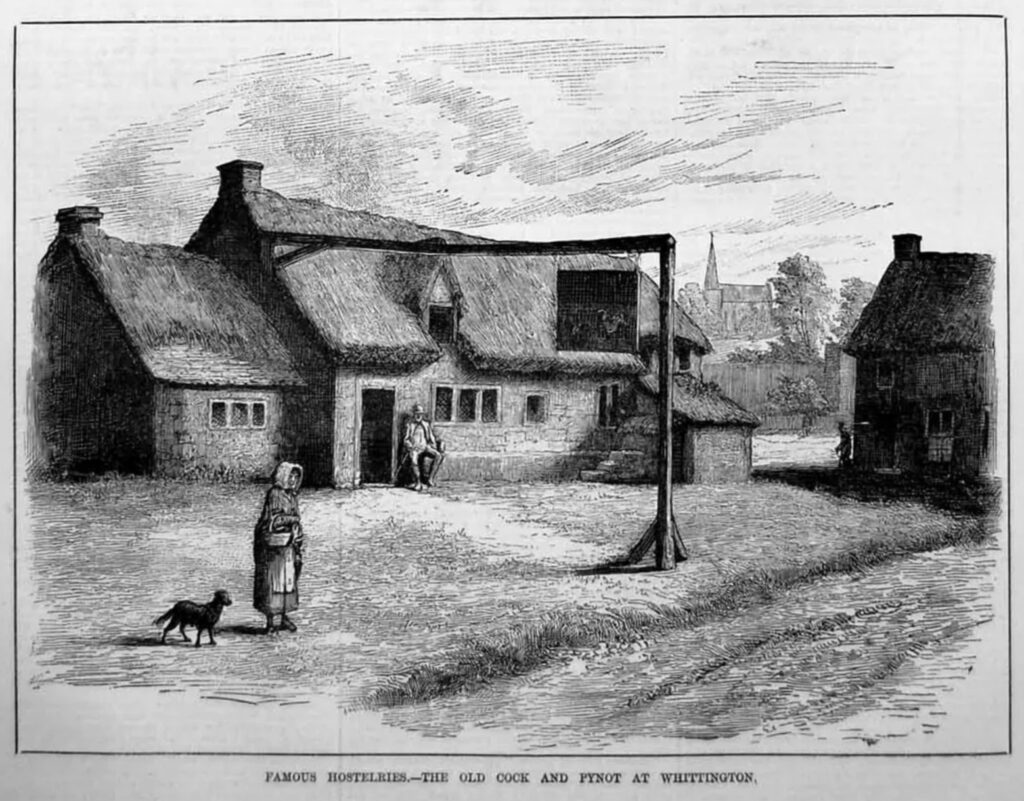
Old Whittington is a village in Derbyshire and 2 miles (3.2 km) north (and a suburb) of Chesterfield and is 10 miles (16 km) south-east of Sheffield. The population of the ward at the 2011 Census was 4,181. The village lies on the River Rother.
Old Whittington is mentioned in the Domesday Book on the first folio for Derbyshire where it is then spelt Witintune.
The original Norman church was small and much altered until replaced by a larger structure in 1865. This was destroyed by fire in 1895, the tower and bells only survived and these were incorporated in the new St Bartholomew’s which opened the following year
The Cock and Pynot inn stands at the junction of the old Sheffield and Rotherham road. It was here that in 1688 that three local noblemen, the Earl of Devonshire, the Earl of Danby and John D’Arcy met to begin planning their part in the events which led to the overthrow of James 11 in favour of his daughter and her husband, William of Orange. For his part in the proceedings the Earl of Devonshire was made the first Duke of Devonshire. The Cock and Pynot inn, known as Revolution House, is now a museum. The tiny cottage with it’s thatched roof, features period furnishings and a changing exhibition on local themes. A video relates the story of the Revolution and the role the house played in those dark and dangerous times.A new pub called the Cock and Magpie was built nearby.
Richard Dixon commenced making glass in 1710 at Glass House Common, an industry which was to continue for 140 years, ‘making a variety of Jacobean drinking glasses both plain and coloured also sturdy dark bottles for storage of wine, sack and ale’. They were the only makers in the area and traded by road routes and the Stockwith Canal. This family were responsible for building Whittington Hall, living there until the business ceased in 1850. After the Dixons, the residence passed through several hands until in 1902 it was leased to Rev Burden and for a period of 21 years was use as an Institute for Inebriate Reform.
The railway coming in the mid 1800s was a boon to the up and coming industries, some of which still trade here. The station opened in 1840. In 1788 the population of the parish was 870 persons, now it is at least ten times that number. The northern end of the parish became New Whittington, a parish in its own right, in 1927.
Old Whittington was the home to Frederick Swanwick (George Stephenson’s right hand man for a great deal of the railways being built)
‘The station area made way for the sewerage complex. The 50 or so cottages in Bamford Street and the Square were demolished some 40 years ago to make way for modern council dwellings, thus ending the era of the market and the annual fair. For village occasions there is a church hall, Swanwick Memorial Hall and Mary Swanwick school. The ‘New’ end has two churches, a chapel and three schools, one with a class for deaf children. There are post office and shops enough for everyday use in both, and a good transport service.’
We have added information on appendices to this page re people and their trades etc. from old directories to record how Old Whittington has changed. It is interesting to note how many family names continue to be associated with the village. We have also added information about the old collieries of Whittington and the Mills that used to operate in the parish.
Lots more about the history of Whittington can be found in a paper (currently in draft form) at the Derbyshire Victoria County History website